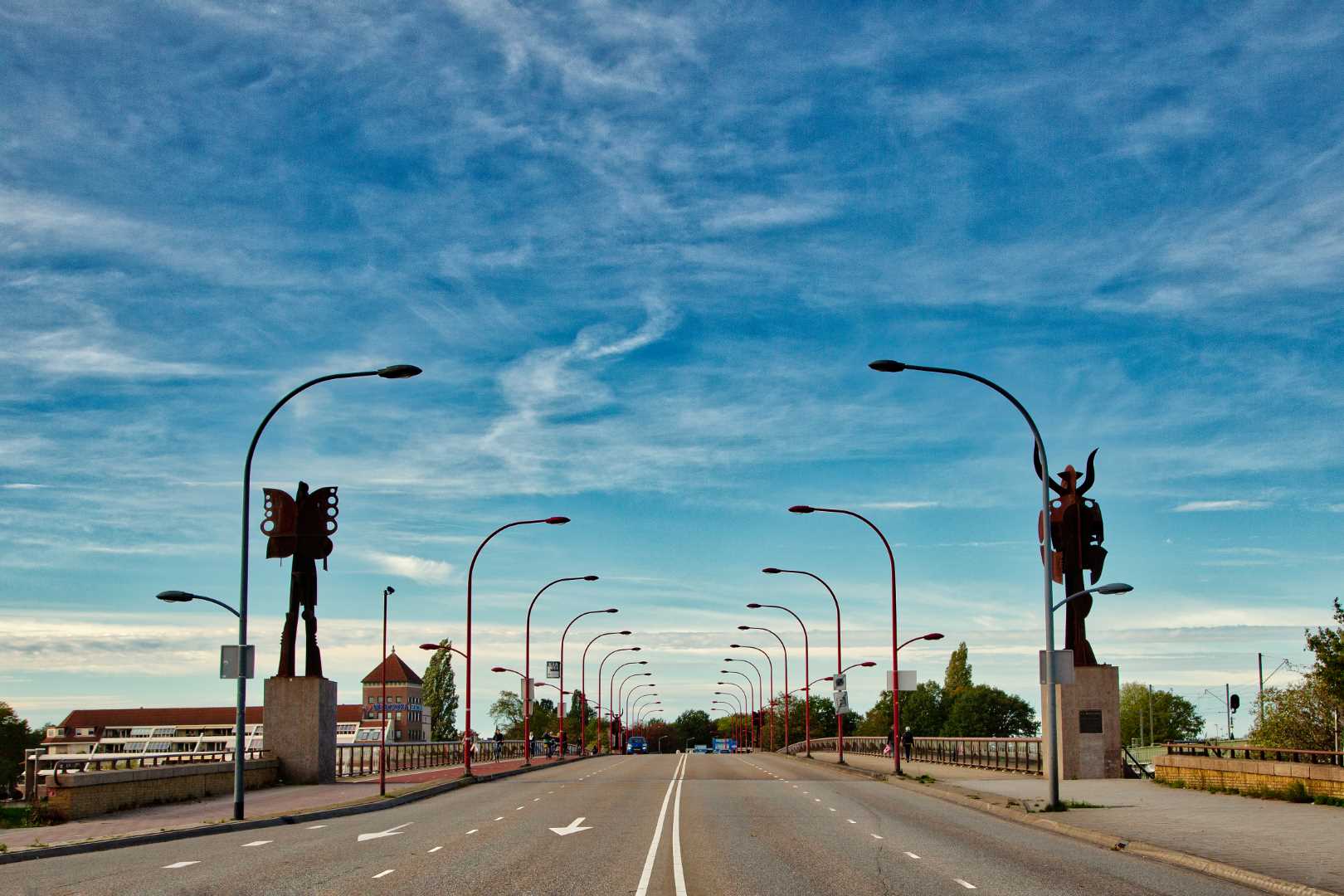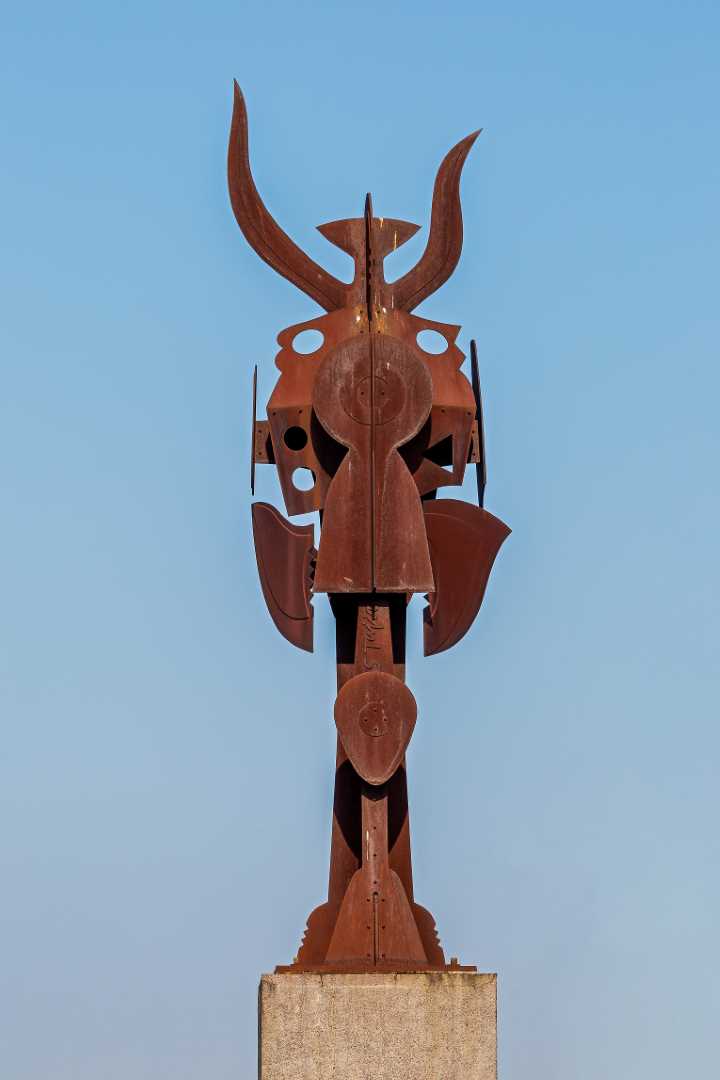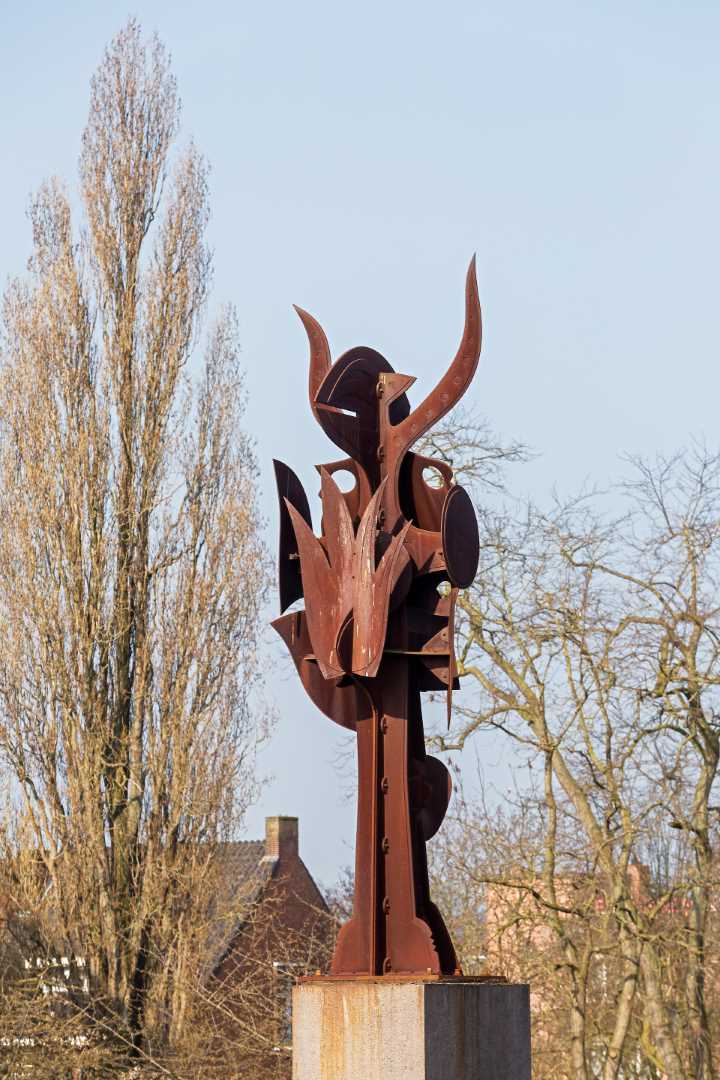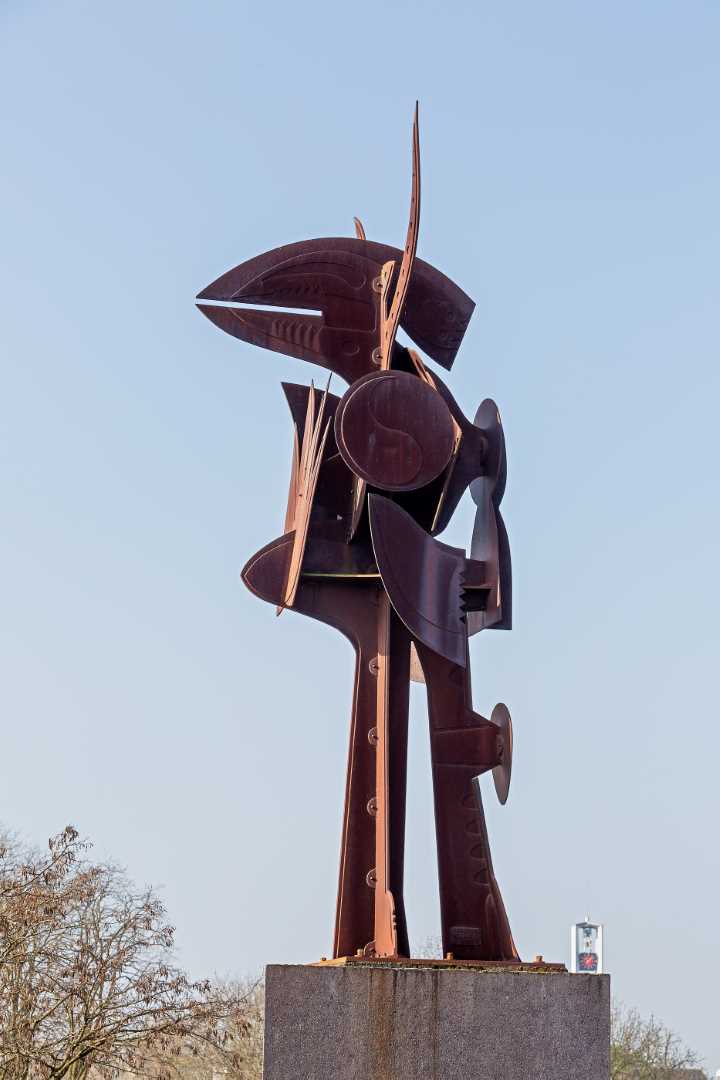The Watchmen
City bridge (left up the stairs to the bridge)
The Watchmen – Shinkichi Tajiri
Since May 2, 2007 – the day of the unveiling by Queen Beatrix – four Watchmen hold guard on the Venlo city bridge. The cast iron statues, made by Japanese-American sculptor Shinkichi Tajiri, were designed in memory of all war victims in the Second World War. They are abstract versions of a warrior, depicted with a shield and/or a sharp object.
The Guards stand to warn the population against violence and war, and to defend the city bridge that was destroyed in air raids during World War II. They are positioned – one guard on each corner – so that they can guard the bridge from all sides. Tajiri made his first series of Guardians in the years after the Second World War. He began a second series in the 1990s. Tajiri himself on the Watchmen: “Ever since time immemorial, defensive watchmen have played a fundamental role in our civilisation. By being alert, watchful and resilient day and night, they protect communities from danger. In their highly concentrated, combative power lies a positive mental aspiration.”
When, in 2020 art in public space was put on a pedestal, the Watchmen were named one of the 100 key works on the initiative of the BK Information Foundation. These are works of art that are or have been artistically, historically, spatially or socially significant.
The artist: Shinkichi Tajiri
Shinkichi George Tajiri (Los Angeles, 7 December 1923 – Baarlo, 15 March 2009) was a Dutch-American artist of Japanese origin. Besides being a sculptor, he was a painter, photographer and filmmaker. He received his first sculpture lessons in 1940. Two years later, after the Japanese attack on Pearl Harbour, Tajiri was imprisoned along with many other Americans of Japanese descent. A year later, he volunteered for the 442nd Regimental Combat Team, a unit composed solely of Japanese-Americans – for which he posthumously received the Congressional Gold Medal from President Obama. Tajiri was sent to Italy where he was wounded.
After the war, Tajiri decided to leave the United States because of the poor treatment of his people. He first settled in Paris where he studied with Ossip Zadkine, Fernand Léger and then at the Académie de la Grande Chaumière. In the mid-1950s, he met the Dutch sculptor Ferdi Jansen from Arnhem, with whom he moved to Amsterdam in 1956. In 1962, the family, which by then had two daughters, settled in Scheres Castle in Baarlo, near Venlo.
In 1949, Tajiri had come into contact with the COBRA group with whom he exhibited in the Stedelijk Museum in Amsterdam. In 1951, the second international exhibition of experimental art (COBRA) was held in Liège. He participated in both exhibitions and was the only one representing the USA. His first exhibition after settling in the Netherlands in 1956 took place at the country estate Hofwijck in Voorburg. In 1959, together with Wessel Couzijn, Hans Verhulst, Ben Guntenaar and Carel Kneulman, he founded the Group Adam. From 1969 to 1989, he was a professor at the Hochschule der Künste in Berlin.
On 25 June 2005, Tajiri was appointed honorary citizen of the municipality of Maasbree and on 7 December 2007 he was knighted in the Order of the Dutch Lion, because of his exceptional dedication and the cultural-historical significance of his activities. In December 2008, shortly before his death, Shinkichi Tajiri received Dutch citizenship.
The city bridge
The current city bridge between Venlo and Blerick was built after the Second World War. It replaced an earlier bridge that had been destroyed by the Allies during the war to block the way for the Germans. The city bridge is part of the bridge plan, a plan dating from 1946 for the construction of a traffic and railway bridge across the river Maas. The plan, which runs from the Eindhovenseweg in Blerick to the station square in Venlo, was designed by Jos Klijnen. The Venlo city council approved the plan in 1948, but it would take until April 1957 before the new road bridge could officially be put into use. The railway bridge followed more than seven years later in May 1964. For a long time, the city bridge was the only and still one of the most important access routes to the centre of Venlo.
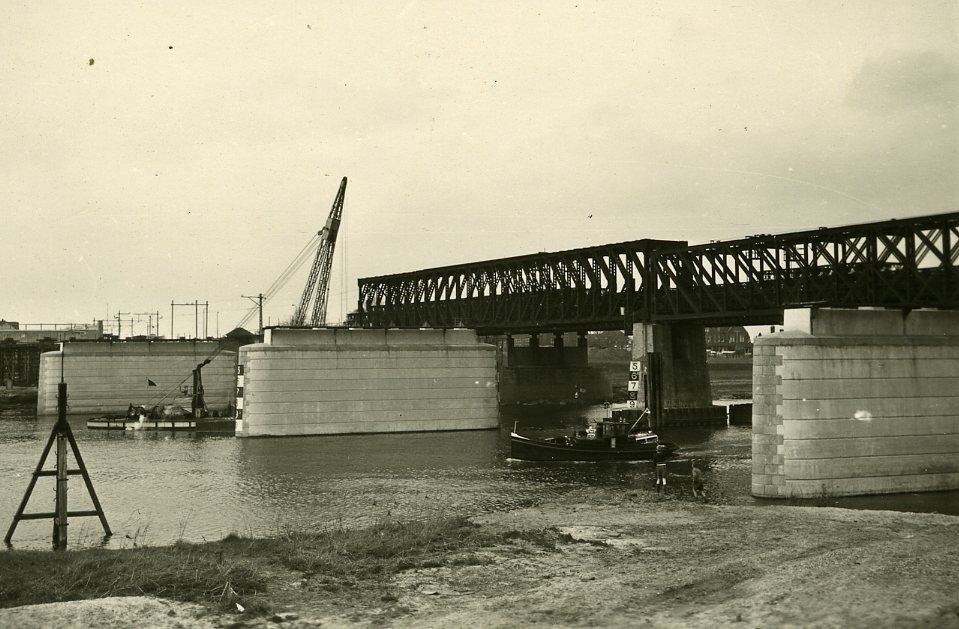
The city or Maas bridge under construction in 1957 (Photo: Venlo Municipal Archives)

